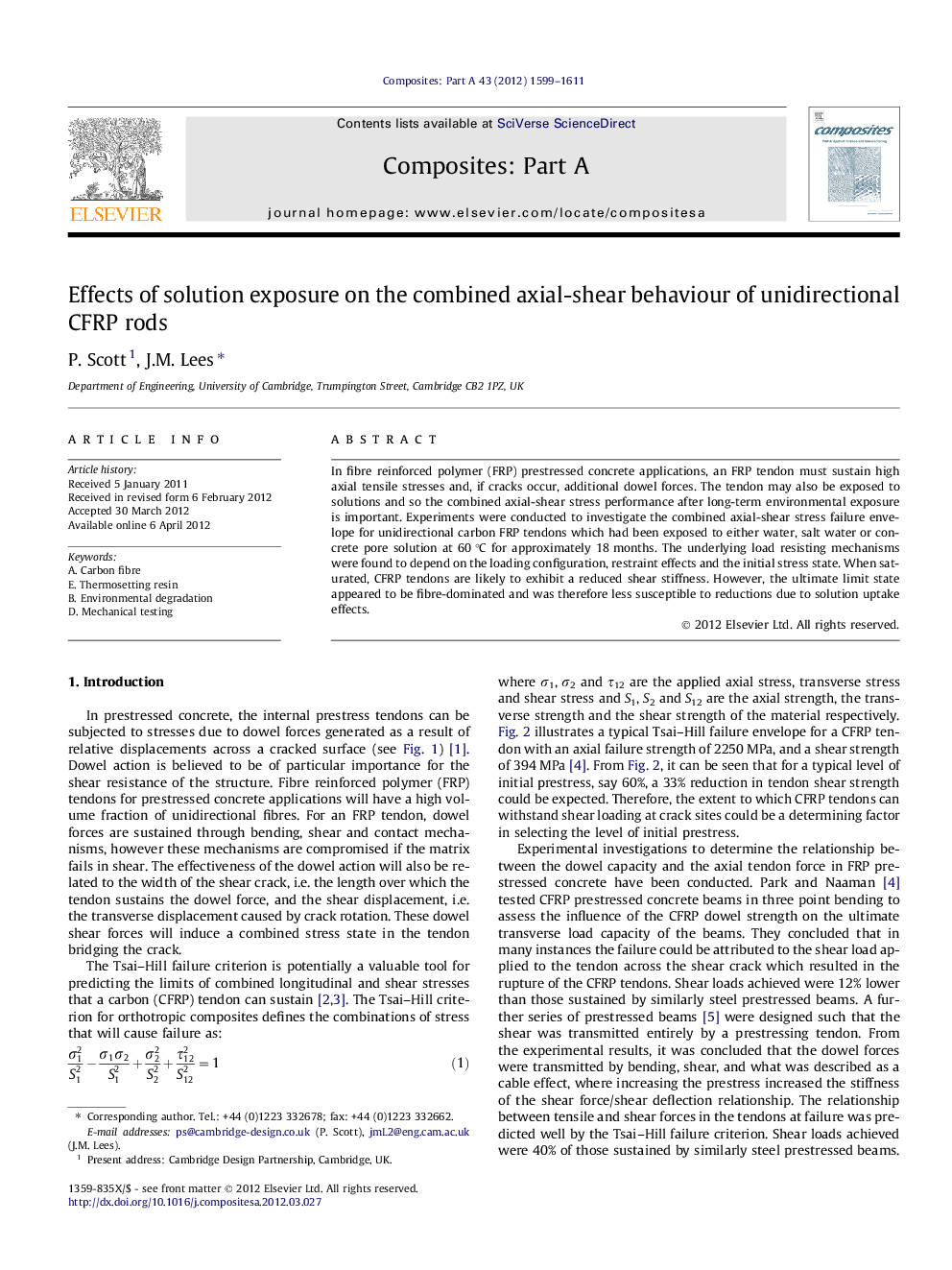| Article ID | Journal | Published Year | Pages | File Type |
|---|---|---|---|---|
| 1466356 | Composites Part A: Applied Science and Manufacturing | 2012 | 13 Pages |
In fibre reinforced polymer (FRP) prestressed concrete applications, an FRP tendon must sustain high axial tensile stresses and, if cracks occur, additional dowel forces. The tendon may also be exposed to solutions and so the combined axial-shear stress performance after long-term environmental exposure is important. Experiments were conducted to investigate the combined axial-shear stress failure envelope for unidirectional carbon FRP tendons which had been exposed to either water, salt water or concrete pore solution at 60 °C for approximately 18 months. The underlying load resisting mechanisms were found to depend on the loading configuration, restraint effects and the initial stress state. When saturated, CFRP tendons are likely to exhibit a reduced shear stiffness. However, the ultimate limit state appeared to be fibre-dominated and was therefore less susceptible to reductions due to solution uptake effects.
